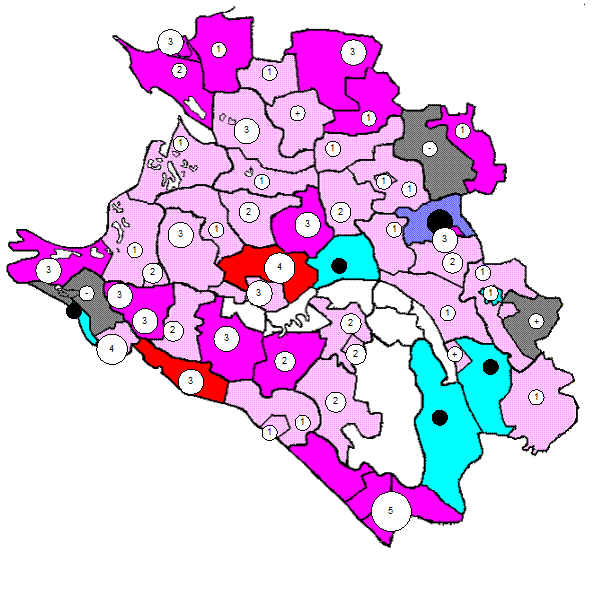Higher Education
Out of more than three million students who graduate from high school each year, about one million go on for higher education. A college at a leading university might receive applications from two percent of these high school graduates, and then accept only one out of every ten who apply. Successful applicants at such colleges are usually chosen on the basis of a) their high school records; b) recommendations from their _________
1A course where you don't take an examination, but a pass-fail test (зачёт). 2 Information on a student's attendance, enrollment status, degrees conferred and dates, honours and awards; college, class, major field of study; address, telephone number. 3 Grade Point Average — a grade allowing to continue in school and to graduate. 4 To take up an additional course for personal interest, not for a credit and to pay for it additionally, cf. факультатив 5 I. D. (Identification Document) — cf. студенческий билет
high school teachers; c) their scores on the Scholastic Aptitude Tests (SATs). The system of higher education in the United States comprises three categories Of institutions: 1) the university, which may contain a) several colleges for undergraduate students seeking a bachelor's (four-year) degree and b) one or more graduate schools for those continuing in specialized studies beyond the bachelor's degree to obtain a master's or a doctoral degree, 2) the technical training institutions at which high school graduates may take courses ranging from six months to four years in duration and learn a wide variety of technical skills, from hair styling through business accounting to computer programming; and 3) the two-year, or community college, from which students may enter many professions or may transfer to four-year colleges. Any of these institutions, in any category, might be either public or private, depending on the source of its funding. Some universities and colleges have, over time, gained reputations for offering particularly challenging courses and for providing their students with a higher quality of education. The factors determining whether an institution is one of the best or one of the lower prestige are quality of the teaching faculty; quality of research, facilities; amount of funding available for libraries, special programs, etc.; and the competence and number of applicants for admission, i. e. how selective the institution can be in choosing its students. The most selective are the old private north-eastern universities, commonly known as the Ivy League, include Harvard Radcliffe, (Cambridge, Mass., in the urban area of Boston), Yale University (New Haven, Conn. between Boston and New York), Columbia College (New York), Princeton University (New Jersey), Brown University, Cornell University, Dartmouth College, University of Pennsylvania. With their traditions and long established reputations they occupy a position in American university life rather like Oxford and Cambridge in England, particularly Harvard and Yale. The Ivy League Universities are famous for their graduate schools, which have become intellectual elite centers. In defence of using the examinations as criteria for admission, administrators say that the SATs provide a fair way for deciding whom to admit when they have ten or twelve applicants for every first-year student seat.
In addition, to learning about a college/university's entrance requirements and the fees, Americans must also know the following: Professional degrees such as a Bachelor of Law (LL.A.) or a Bachelor of Divinity (B.D.) take additional three years of study and require first a B.A. or B.S. to be earned by a student. Graduate schools in America award Master's and Doctor's degrees in both the arts and sciences. Tuition for these programs is high. The courses for most graduate degrees can be completed in two or four years. A thesis is required for a Master's degree; a Doctor's degree requires a minimum of two years of course work beyond the Master's degree level, success in a qualifying examination, proficiency in one or two foreign languages and/or in a research tool (such as statistics) and completion of a doctoral dissertation. The number of credits awarded for each course relates to the number of hours of work involved. At the undergraduate level a student generally takes about five three-hour-a week courses every semester. (Semesters usually run from September to early January and late January to late May.) Credits are earned by attending lectures (or lab classes) and by successfully completing assignments and examinations. One credit usually equals one hour of class per week in a single course. A three-credit course in Linguistics, for example, could involve one hour of lectures plus two hours of seminars every week. Most students complete 10 courses per an academic year and it usually takes them four years to complete a bachelor's degree requirement of about 40 three-hour courses or 120 credits. In the American higher education system credits for the academic work are transferable among universities. A student can accumulate credits at one university, transfer them to a second and ultimately receive a degree from there or a third university. 1. As you read the text a) look for the answers to the questions:
1. What are the admission requirements to the colleges and universities? 2. What are the three types of schools in higher education? 3. What degrees are offered by schools of higher learning in the USA? What are the requirements for each of these degrees? 4. What are the peculiarities of the curricula offered by
a college or a university? 5. What is a credit in the US system of higher education? How many credits must an undergraduate student earn to receive a bachelor's degree? How can they be earned?
|




